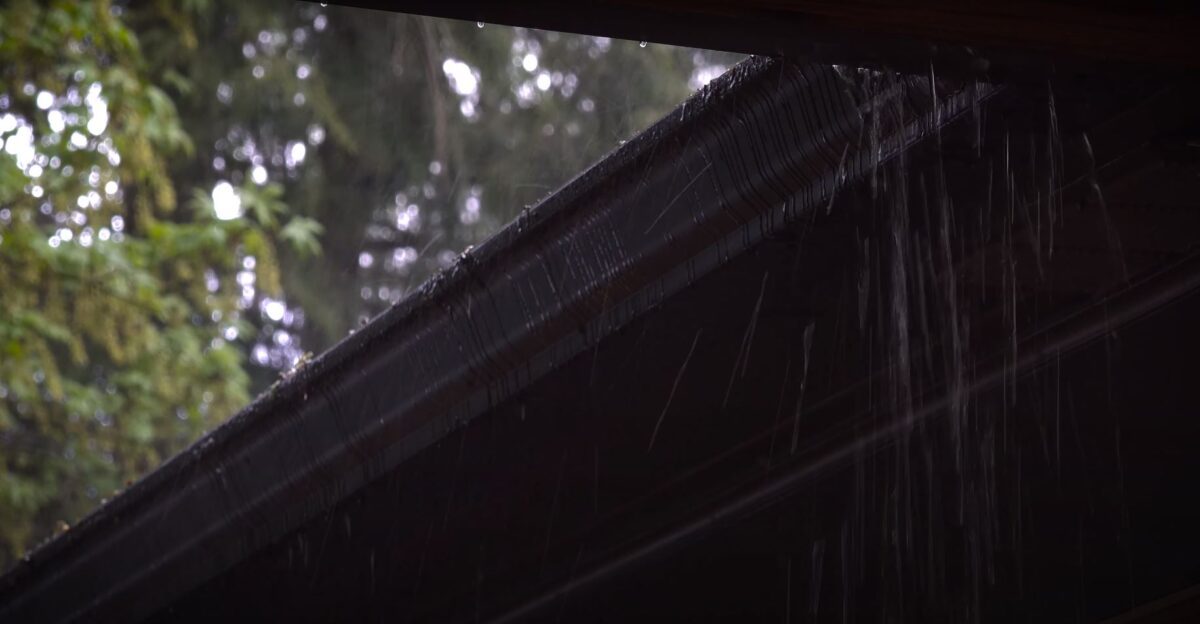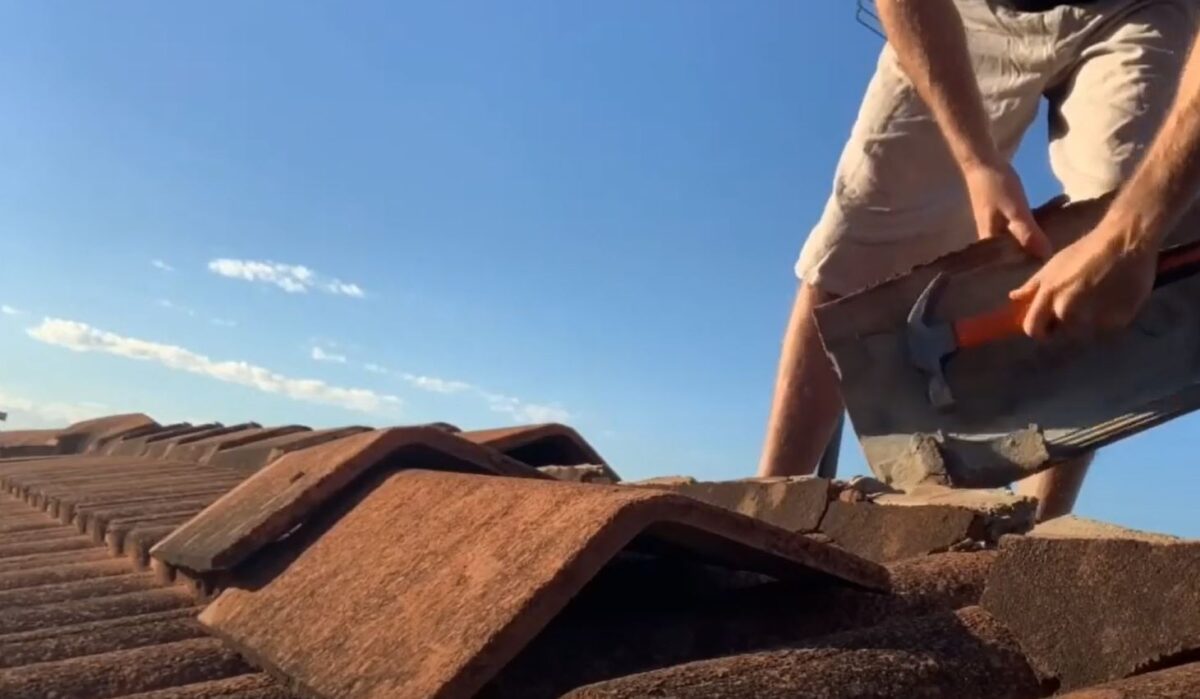The Importance of Gutter Angle in Preventing Water Overflow
A well-installed gutter system is pivotal to the protection and maintenance of homes in Auckland, especially during the unpredictable storm seasons. One significant factor homeowners should be mindful of is the angle or pitch of the gutter. Yes, the angle can indeed affect water overflow.
Understanding Gutter Angles
The angle at which gutters are installed, often referred to as the “pitch” or “slope”, plays a pivotal role in ensuring that water flows efficiently away from the home, preventing potential damage.
Importance of the Right Slope:
It’s crucial to get the slope right. A gutter without the correct slope may not effectively channel water towards the downspouts. This can result in stagnant water, which can lead to issues like rust, mold, and even potential structural damage.
Ideal Slope Measurement:
In the metric system, the recommended slope for gutters is about 2 centimetres of descent for every 3 metres of gutter length. This ensures a subtle but effective flow of water.
Adjustments for Rain Patterns:
In areas like Parnell or Remuera, where Auckland can experience bouts of heavy rain, ensuring the correct gutter angle becomes even more critical. A steeper pitch might be recommended in these regions to manage the volume of rainwater.
Measurement Techniques:
To determine the correct slope:
Begin by fixing the end of the gutter where the downspout is located as the lowest point.
Using a spirit level, ensure that the gutter has the necessary fall towards the downspout.
Mark the high point and low point, then calculate the slope using the 2cm per 3m guideline.
Complex Roof Designs:
For homes with complex architectural designs, more downspouts may be required. It’s also essential to consider the layout and number of valleys in the roof, as these can channel a higher volume of water.
Adjustments and Realignment
Over time, due to various factors like weight from accumulated debris, snow, or even structural settling of the house, gutters can sag or get misaligned. Regular maintenance and checks are essential. If water seems to pool or there’s evident stagnation, it might be time to readjust the gutter’s angle.
Understanding and ensuring the right gutter angle is not a mere technicality but a critical aspect of home maintenance. It plays a crucial role in safeguarding the structural integrity of the house and ensuring the longevity of the gutter system itself.
Environmental Considerations
In Auckland, with its diverse climate, environmental factors play a crucial role. Here’s how:
- Rainfall Intensity: Certain suburbs experience more torrential rainfall than others. For example, in areas like Ponsonby, the rain can be intense, necessitating a steeper gutter angle.
- Leaf Fall and Debris: Suburbs with abundant greenery, like Grey Lynn, might have more leaves and debris falling into gutters. This can obstruct water flow if the angle isn’t optimal.
Different Guttering Options and Costs
When considering guttering options, it’s essential to understand their pricing and how the angle of installation can vary among them:
PVC Gutters:
A popular choice for their cost-effectiveness, averaging at NZ$33.75 per metre. They’re lightweight, making angle adjustments relatively straightforward.
Aluminium Gutters:
Durable and rust-resistant, they cost around NZ$60.75 per metre. They can be seamlessly installed at the desired angle.
Stainless Steel Gutters:
Known for longevity, they come in at about NZ$94.50 per metre. Their weight means a precise angle is crucial during installation.
Copper Gutters:
A premium option at NZ$135 per metre, offering both aesthetics and durability. Proper installation angle is essential to prevent water stagnation and potential verdigris formation.
Health and Safety in Gutter Installation
For the safety of both homeowners and gutter installation experts, Auckland has certain health and safety regulations. Ensuring gutters have the correct gutter pitch minimises water overflow risks, preventing potential hazards like water damage or mold formation in homes.
Auckland Council Bylaws and Gutter Installation
It’s essential to be familiar with specific bylaws, especially for newcomers to Auckland. The Auckland Council mandates guidelines to ensure effective water runoff from properties. Certain codes dictate how rainwater should be directed, often to maintain the integrity of Auckland’s stormwater system.
For instance, in suburbs like Manukau, there’s a particular emphasis on preventing water overflow that could affect neighbouring properties. In contrast, North Shore residents might find guidelines more focused on preserving the local marine ecosystem, ensuring gutters don’t cause excessive freshwater inflow.
Summarising:
Correct gutter angle installation isn’t merely about aesthetics; it’s about functionality, longevity, and the protection of your Auckland home. It’s an investment in safeguarding your property against water damage and the associated costs.
Guttering Cost Breakdown:
| Gutter Type | Average Cost (per metre) |
| PVC Gutters | NZ$33.75 |
| Aluminium Gutters | NZ$60.75 |
| Stainless Steel | NZ$94.50 |
| Copper Gutters | NZ$135 |
Remember, while these prices provide a guideline, the actual cost can vary based on gutter installation complexities, including adjusting the gutter’s angle. Ensure you consult with a seasoned roofing professional when considering guttering for your Auckland home.
Frequently Asked Questions
What is the ideal slope for gutters in Auckland?
The recommended slope for gutters is typically 2 centimetres of descent for every 3 metres of gutter length to ensure efficient water flow.
Why is stagnant water in gutters a concern?
Stagnant water can lead to multiple issues like rusting of the gutters, mould growth, and potential structural damage due to the added weight and moisture.
How does the Auckland climate impact gutter installation?
With Auckland experiencing both frequent rain showers and bouts of heavy rainfall, especially in areas like Manukau and Waitakere, ensuring gutters have the right slope is crucial to handle varying water volumes.
Does the type of material used for gutters affect the angle of installation?
While the material can influence the weight and durability of gutters, the angle of installation primarily depends on ensuring efficient water flow rather than the material itself.
What if my gutter’s slope isn’t directing water effectively?
It’s crucial to address this quickly. Prolonged water overflow or stagnation can lead to structural damage. It might be necessary to readjust the slope or consider adding more downspouts.
Are there Auckland council regulations regarding gutter installation?
Yes, there are specific regulations and bylaws that homeowners in Auckland need to adhere to when installing gutters. These bylaws may vary slightly between regional councils. Always check with the local council or a professional before beginning any installation.
Key Takeaways
Gutter Slope Importance:
The angle of your gutter, often called the slope or pitch, plays a crucial role in ensuring efficient water flow and preventing blockages and overflows.
Cost Implications:
Different types of guttering systems have varied costs, and adjusting the angle might incur additional expenses. After adjustments, PVC guttering typically costs around NZD 70 per metre, and copper guttering could cost upwards of NZD 200 per metre.
Environmental Considerations:
A correctly sloped gutter prevents waterlogging around your property, which can protect local waterways from potential pollution and sediment run-off.
Auckland Regulations:
The Auckland Council has specific bylaws relating to gutter installations. Homeowners need to ensure that their gutters adhere to these local regulations to avoid potential fines and ensure efficient water drainage.
Professional Consultation:
While minor adjustments can be a DIY task, it’s always best to seek professional advice or services to ensure the gutter is optimally positioned and securely attached.
Roof Types Matter:
The design and material of your roof can influence how water flows into your gutters, sometimes necessitating adjustments in the gutter’s angle for maximum efficiency.


